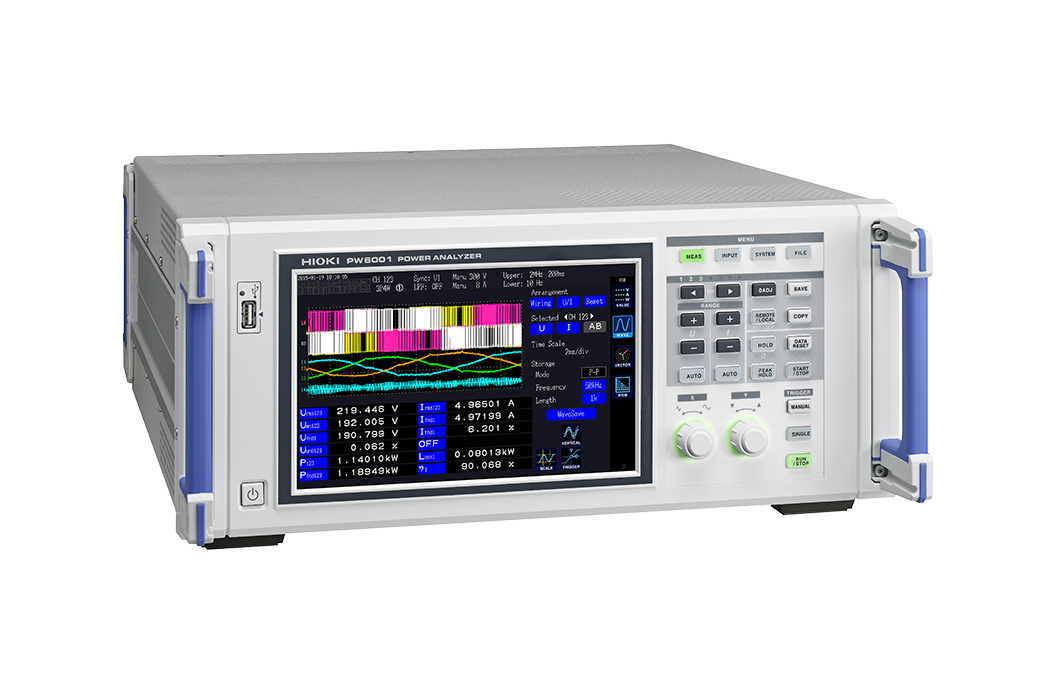Electric Angle Measurement of Motors
Correct the rotation synchronization signal (rotation sensor signal/pulse signal from the rotation indicator) and induced voltage phase of motors, and measure the phase of line (phase) voltage and current for the induced voltage of a running motor.
【Step 1】 Rotate the motor from the load side and measure the induced voltage of the motor
- Measure the fundamental wave's RMS value and the total RMS value of the induced voltage.
- Conduct zero compensation for the phase between the rotation synchronization signal and the fundamental wave voltage of the induced voltage. This correction allows the electric angle to be measured in reference to the induced voltage phase of a running motor.
- A harmonic function allows converting the line voltage to a phase voltage (in reference to the virtual neutral point) using a Δ-Y conversion function when three-phase three-wire (3P3W3M connection) measurements are performed.
【Step 2】 Perform measurements of a running motor
- The fundamental wave component, harmonic component, and electric angle of line voltage and current to the motor can be measured in reference for the induced voltage phase.
- Motor efficiency, inverter efficiency, and total efficiency can be measured while observing the motor control.
Products used
- POWER ANALYZER PW6001-16 (16ch)
- Current Sensor : Please select the current sensors appropriate for your application separately.
- Torque sensor : Please purchase a distortion gauge type torque sensor separately.
- Tachometer : Please purchase a tachometer separately.
Information valid as of August 2015. Specifications are subject to change and revision without notice.

